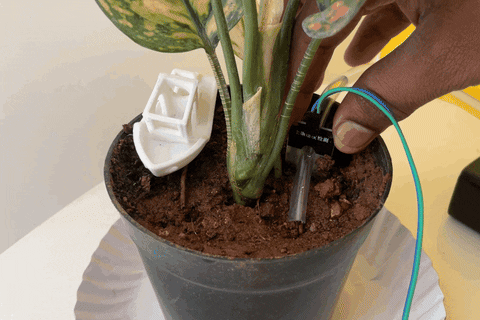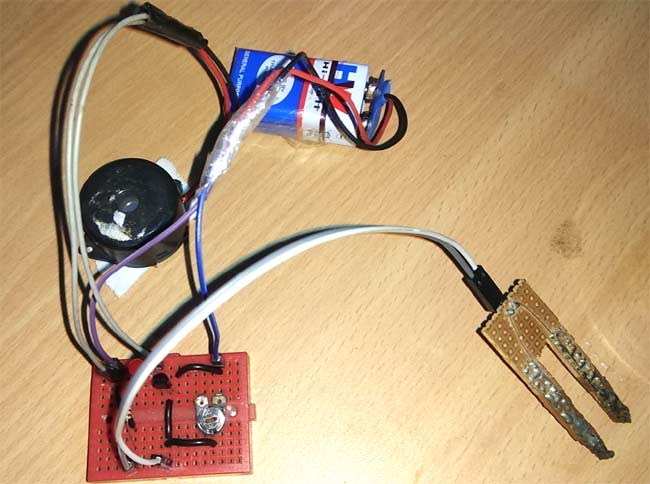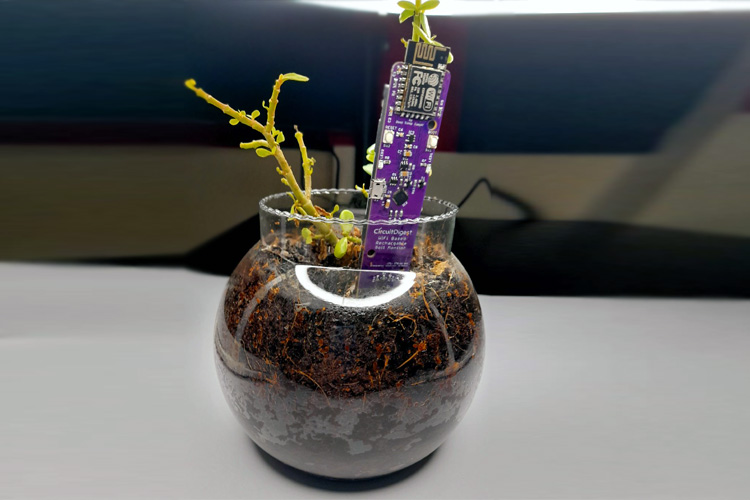4th Electronics Supply Chain Summit: Experts Highlights The Opportunities to Grow Security Products Industry in India
- Various ministries and associated departments were urged via PPO that security and added products will not be purchased from brands that are having a long history of security breaches and data leakage.
- The global CCTV market is around 2 lakh crores, growing at a rate of 17 percent and is expected to reach more than 100 billion dollars.
- In the surveillance industry, India has the potential to become the second largest market in the world by 2030
Over the past few years, the world has witnessed a surge in demand for video surveillance and smart security cameras. Although USA and China still grab the top spot of market share in this industry, experts opine that India has the potential to become the second largest market by 2030. CCTV cameras have become an important part of our lives revolutionizing the way we monitor and secure our surroundings. According to a report by Sparsh CCTV, the roots of CCTV cameras can be traced back to the 1940s when German engineer Walter Bruch developed a rudimentary system for monitoring V-2 rockets. However, it was during the 1960s that CCTV technology truly began to flourish. Early systems utilized analog signals, transmitting footage over coaxial cables to limited monitors in control rooms.
Now, with the advancement of technology and rapid increase of crimes, these devices have gained a huge traction all over the world. India's Electronic Security Market was valued at USD 1.32 billion in 2021 and is expected to reach USD 4.90 billion by 2027, at a CAGR of 24.37 percent over the forecast period. The security products industry is growing rapidly and is estimated to escalate by 22 percent per annum, which will sustain by 2025 and beyond. India is emerging as a global power and security is emerging as a priority. We need to ensure India must grow by itself and must be a source of prosperity for the rest of the world. The size of the global security electronics market is intense and valued at US $41 billion in 2020 and is expected to reach US $68 billion by 2026 at a CAGR of 9 percent from 2021-2026.
In an effort to bolster the growth of CCTV and surveillance market in India, the government of India in a recently issued advisory has highlighted the danger of data leakage through CCTVs. Various ministries and associated departments were urged through this advisory that security and added products will not be purchased from brands that are having a long history of security breaches and data leakage. The advisory has been issued by the Ministry of Electronics and Information Technology (MeitY), which has requested all its departments to strictly abide by the guidelines of Public Procurement Order (PPO), which was unleashed on March 6, 2024.

Recently, in the “4th Electronics Supply Chain Summit” organized by industry body ELCINA, key CCTV manufacturers, government officials and defense personnel discussed the key strategies to boost the surveillance industry and also the emerging opportunities for security products industry in heightened risk scenarios. In the detailed discussion, let’s find out country’ surveillance electronics industry has grown over the years and how its growth will be boosted in the global value chain.
Atul Lal, CEO, Dixon Technologies and President at ELCINA
The global CCTV surveillance industry is going through a significant transformation, which is like a renaissance. The positive impact in this industry is happening because of a huge technological change and there is a vast security challenge globally as well as in India. There is a significant intervention by the government mostly in the policy framework and also huge initiatives have been undertaken to grow Make-in-India. The global CCTV market is around 2 lakh crores, growing at a rate of 17 percent and is expected to reach more than 100 billion dollars.
The domestic market is growing but it’s most dependent on other countries for crucial electronic components, but it is expected to touch almost 10 billion dollars in the coming years at a CAGR of around 20 percent. This kind of wide adoption of CCTVs has happened because of rapid urbanization, smart city projects, development of various transportation sectors as well as roadways. Crime rates have been increasing. For instance, in Delhi in the month of February, around 4 lakh cases have been registered. The honorable supreme court intervened and strictly instructed all the police stations to have top-notch video surveillance systems. More than 10,000 CCTVs have been installed in the police stations in Bihar alone. The industry is in a very high growth phase. What is extremely important is that MeitY has seriously unleashed the policies like the PPO of 6th of March clearly, which clearly states that preference will be given to the Indian solutions. The initial shift might be tightly slow, but the penetration rate will be high and there will be more Indian solutions involved. In the PPO order it is stated that the CCTV cameras and the related products and equipment will be certified by MeitY.

Sanjeev Sehgal, managing director, Sparsh (Samriddhi Automations Pvt. Ltd.)
The Indian government has come up very intelligently with all the policies and frameworks to boost the CCTV security industry in the country. The policy has been created in such a manner that we are able to restrict data leakage and security breach. The government has truly taken a giant leap in this sector. The PPO, which was announced on 6th of March, is going to secure and grow every security equipment, not only CCTVs. You have to manufacture and produce products domestically or else you cannot get any benefits out of this policy. It covers cybersecurity sector as well. Whether it’s a private or government agency, everyone is worried about data security. The video surveillance equipments are now part and parcel of our lives. If the Indian domestic industry benefits from this policy and aligns themselves with the vision of the government and MeitY, there is definitely a big way forward for the industry not only for India but also for the world. India has the opportunity to become a CCTV factory for the world. The industry is fully committed to design products in India and fulfill the vision of the government.
Aditya Khemka, managing director of CP PLUS
First of all I must say that associations like ELCINA is doing a great job in bringing the manufacturers and the government together because unless all the stakeholders work together there is no possibility to grow the industry. Now speaking of the industry, the volume of CCTV units which gets sold in the world is about 600 million devices. There are about 16 Crores of CCTV cameras, which get deployed globally. India has just about five percent of the market share, which is 25 percent less than China and USA. I personally believe that India has the potential to become the second largest market in the world by 2030.
As population and prosperity metric grow, the demand for the security devices increases vice versa. The sector has tremendous potential for job creation both indirectly and directly. We have to take opportunities from the geopolitical changes. We must understand that our goal is not just to cater to India but to increase exports as well. India has the potential to become a trusted and reliable partner in this ecosystem. The policies have incentivized domestic production and local manufacturing and also boosted R&D and innovation. The government has given Indian entrepreneurs the confidence to move beyond the comfort zones and the fulfill the dream of Aatmanirbhar bharat.
Asif Jalal, IPS, IG, (Communication & IT) BSF
In India, every state has a different geography and a different terrain, and it becomes a huge challenge for the security personnel to protect the border. People across the borders are constantly improving new technologies to breach our security modules and soldiers who are guarding the fence. They send explosive devices, illegal guns, and other narcotic devices. Another challenge we face seriously with electronic devices such as drones, which comes to our areas and captures all secretive information. It becomes very difficult to detect due to lack of technology. During the fog, it becomes more difficult to identify it and this is where CCTV cameras play an important role in the entire area. We require more modern surveillance and cameras that can detect the flaws easily.
Dr. Anand Prakash Maheshwari, Fmr. IPS, Spl Secretary (Internal Security) MHA
Speaking of national development and security, companies in India are working closely to provide solutions at best. Security and development go hand in hand. The whole security scenario is changing all over the world. Speaking of the technology front, threats are increasing, and power metrics are changing. In the last five years, search engines, crucial components like semiconductors, IoT and AI are also risking cybersecurity and breaches along with development. These technological advancements bring more concerns about the security aspects. Every development comes at some costs. Social networking controls our behavior patterns. Technologies these days are not isolated but rather integrated and electronics is now an important part of whatever we are doing in life. Even in the security sector, electronic components are the crucial element and we will definitely find out ways to grow the components manufacturing sector.



























 About Author: Adam Taylor is a professor of embedded systems, engineering leader, and world-recognized expert in FPGA/System on Chip and Electronic Design.
About Author: Adam Taylor is a professor of embedded systems, engineering leader, and world-recognized expert in FPGA/System on Chip and Electronic Design.





